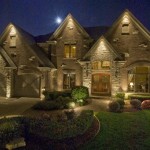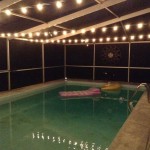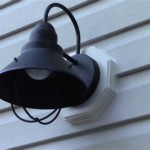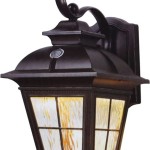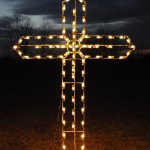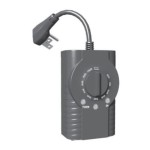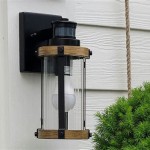Elevating Your Landscape: Outdoor Tree Lighting Ideas
Outdoor tree lighting transforms landscapes from mundane to magical, enhancing curb appeal and creating a welcoming ambiance for homes and businesses. Strategic illumination not only highlights the beauty of trees but also provides safety and security by illuminating pathways and deterring potential intruders. Selecting the right lighting techniques and fixtures is essential for achieving a visually appealing and functional outdoor space.
The goal of outdoor tree lighting should be to complement the existing landscape design, not overwhelm it. Considerations should include the size and shape of the trees, the surrounding architecture, and the desired aesthetic. A well-planned lighting scheme will accentuate the natural features of the trees, creating depth, dimension, and visual interest.
Highlighting Architectural Features with Uplighting
Uplighting is a common and effective technique for illuminating trees from the ground up. This method focuses the light source at the base of the tree, directing it upwards through the canopy. The effect can be dramatic, emphasizing the height and structure of the tree, particularly those with interesting branching patterns or unique bark textures. Uplighting works best when the tree's shape is distinct and worth showcasing.
Various types of fixtures can be used for uplighting, including spotlights, floodlights, and well lights. Spotlights provide a focused beam of light, ideal for highlighting specific features, while floodlights cast a wider beam, illuminating a larger area of the tree. Well lights are recessed into the ground, offering a discreet option that minimizes visual clutter during the day. The choice of fixture depends on the desired intensity and spread of light, as well as the aesthetic preferences of the homeowner.
The placement of uplights is crucial. Careful consideration should be given to the distance from the tree, the angle of the light, and the potential for glare. Adjusting the beam angle and intensity can create different effects, ranging from a subtle glow to a dramatic silhouette. Shielding the light source can also help minimize glare and direct the light where it is most needed.
Color temperature is another important factor to consider. Warm white light (2700-3000K) creates a cozy and inviting atmosphere, while cool white light (4000-5000K) provides a brighter, more modern look. The choice of color temperature should complement the existing landscape lighting and the architectural style of the home.
Power source and installation should also be considered when planning uplighting. Low-voltage lighting systems are a popular choice due to their safety and energy efficiency. These systems require a transformer to convert the standard household voltage to a lower voltage, making them safer to handle. Proper wiring and grounding are essential for ensuring the safety and longevity of the lighting system. Professional installation is recommended to ensure that the wiring is done correctly and that the fixtures are properly placed.
Creating Ambiance with Downlighting and Moonlighting
Downlighting, also known as moonlighting, involves mounting light fixtures high in the branches of trees and directing the light downwards. This technique mimics the natural effect of moonlight filtering through the leaves, creating a soft, diffused light that is both elegant and functional. Downlighting is particularly effective for illuminating pathways, patios, and other outdoor living areas.
To achieve a realistic moonlighting effect, use fixtures with a soft, cool white light. The light should be subtle and not too intense, creating a gentle glow rather than a harsh glare. Shielding the light source is also important to prevent light pollution and minimize direct eye contact with the bulb. Fixtures designed specifically for downlighting often have built-in shields and reflectors to direct the light downwards.
The placement of downlights requires careful consideration. The goal is to position the fixtures in such a way that the light is evenly distributed across the desired area, without creating harsh shadows or hot spots. Experimenting with different fixture locations and angles is often necessary to achieve the desired effect. Professional lighting designers can assist in determining the optimal placement of downlights for a particular landscape.
Installation of downlights can be more challenging than uplighting, as it requires climbing the tree and securing the fixtures to the branches. It is important to use tree-friendly mounting hardware that will not damage the tree. Cables should also be carefully routed and secured to prevent them from becoming entangled in the branches or posing a tripping hazard. Due to the complexity of the installation, professional assistance is often recommended.
Beyond aesthetic appeal, downlighting enhances safety and security. By illuminating pathways and other areas around the home, it reduces the risk of accidents and deters potential intruders. Motion-activated downlights can provide an extra layer of security, automatically illuminating when movement is detected.
String Lights: Adding a Festive Touch
String lights offer a versatile and affordable way to add a festive touch to outdoor spaces. These lights can be strung across tree branches, wrapped around trunks, or draped along fences and pergolas. String lights are available in a wide range of styles, colors, and sizes, allowing homeowners to customize their lighting to suit their personal preferences.
When selecting string lights for outdoor use, it is important to choose lights that are specifically designed for outdoor environments. These lights are typically made with durable materials that can withstand the elements, such as rain, snow, and sunlight. Look for lights that are UL-listed for outdoor use, indicating that they have been tested and certified for safety.
LED string lights are a popular choice due to their energy efficiency and long lifespan. LED lights consume significantly less energy than traditional incandescent bulbs, saving homeowners money on their electricity bills. They also produce very little heat, making them safer to use around trees and plants.
String lights can be used to create a variety of different effects. For a romantic and intimate atmosphere, use warm white string lights with small bulbs. For a more festive and lively atmosphere, use multi-colored string lights with larger bulbs. Experiment with different hanging patterns to create a unique and personalized look.
Safety is paramount when installing string lights. Ensure that the lights are properly secured to prevent them from falling down or becoming entangled in the branches. Avoid overloading electrical circuits by using multiple extension cords. Inspect the lights regularly for any signs of damage, such as frayed wires or cracked bulbs. Replace any damaged lights immediately.
Consider the impact of string lights on wildlife. Bright lights can disrupt the natural behavior of nocturnal animals, such as birds and insects. Use lights sparingly and avoid placing them near nesting areas or feeding grounds. Consider using lights with dimmer settings or timers to reduce their impact on wildlife.
Solar-powered string lights provide an eco-friendly and convenient option for outdoor lighting. These lights are powered by solar panels that collect energy from the sun during the day and store it in batteries. At night, the lights automatically turn on, providing illumination without the need for electricity. Solar-powered string lights are ideal for areas where there is no access to electrical outlets.
Permanent outdoor lighting requires more planning but offers a long-term solution. These systems are typically professionally installed and hardwired into the home's electrical system. Permanent lighting can be customized to suit the specific needs of the homeowner, with options for remote control, dimming, and color changing. They offer increased durability and reliability compared to temporary lighting options.
Ultimately, the best outdoor tree lighting ideas depend on individual preferences, the characteristics of the trees, and the overall design of the landscape. Careful planning and attention to detail are essential for creating a visually appealing and functional outdoor space that enhances the beauty of the home and provides years of enjoyment.

4 Tree Lighting Ideas That Will Transform Your Landscape

Outdoor Tree Lighting Ideas Lights All Year

30 Best String Lights Outdoor Ideas For A Beautiful Backyard

Light Ideas For Outdoor Trees Custom Builders

How To Wrap Trees With Outdoor Lights In 6 Easy Steps Omysa

Pin On Luzes

Stunning Outdoor Lighting Ideas For Your Backyard Party Lights Company

15 Beautiful Outdoor Lighting Diy Ideas Making Lemonade

Tree Lights For Spring And Summer Yard Envy

How To Wrap A Tree With Lights
Related Posts
